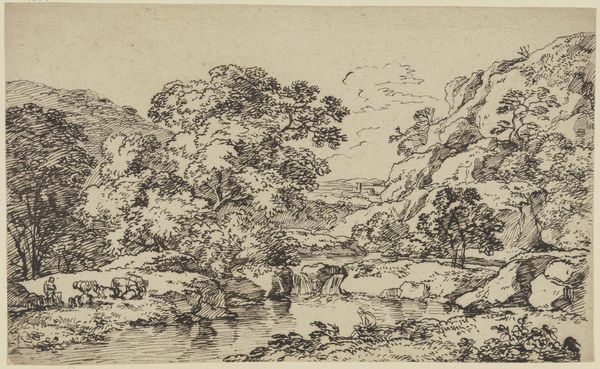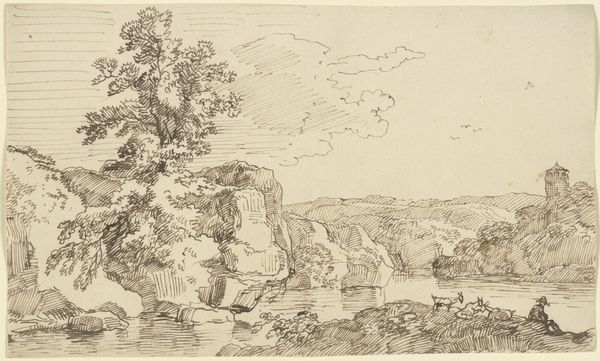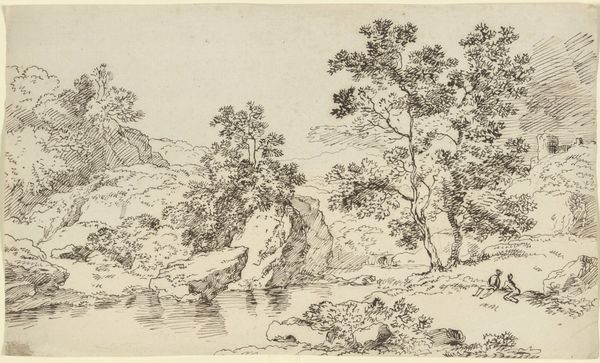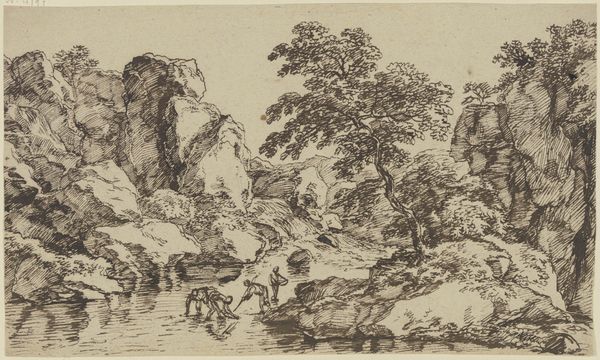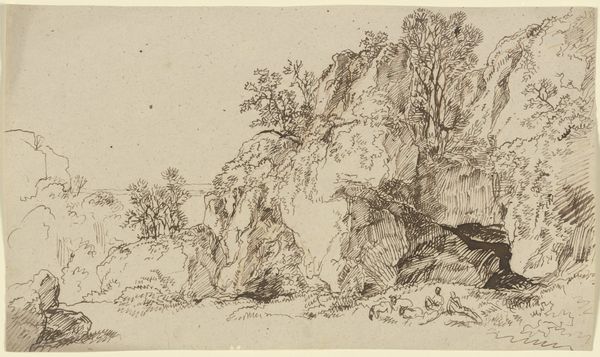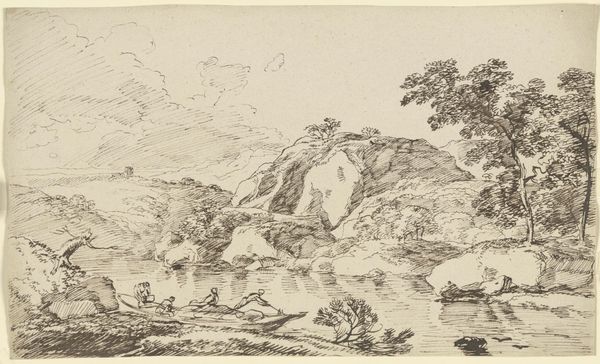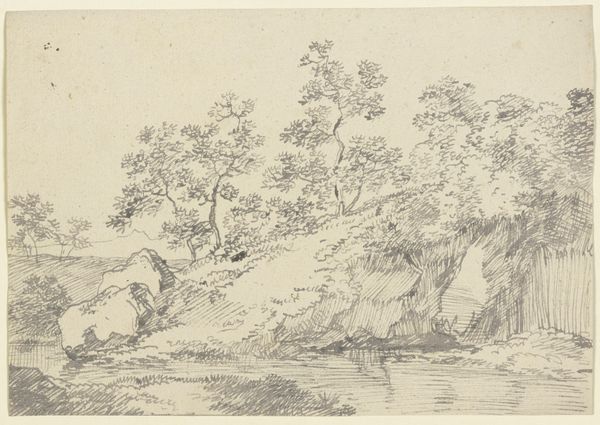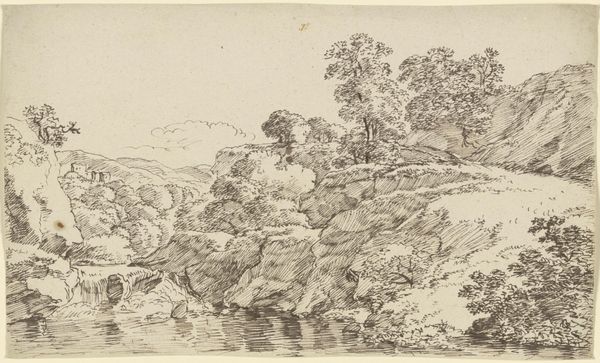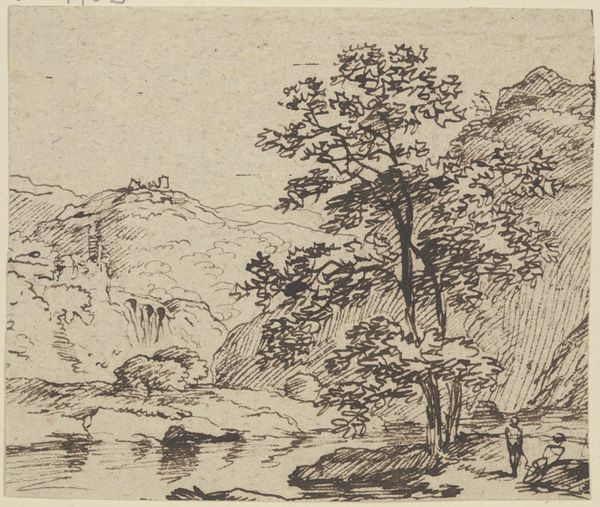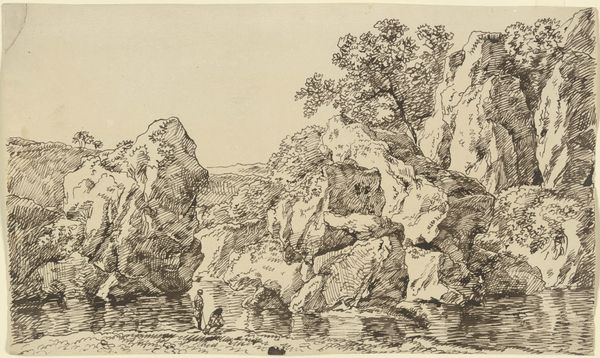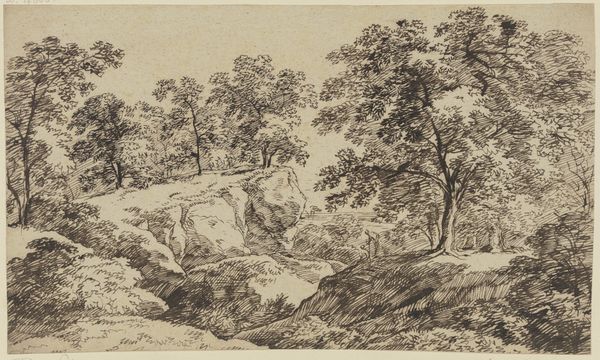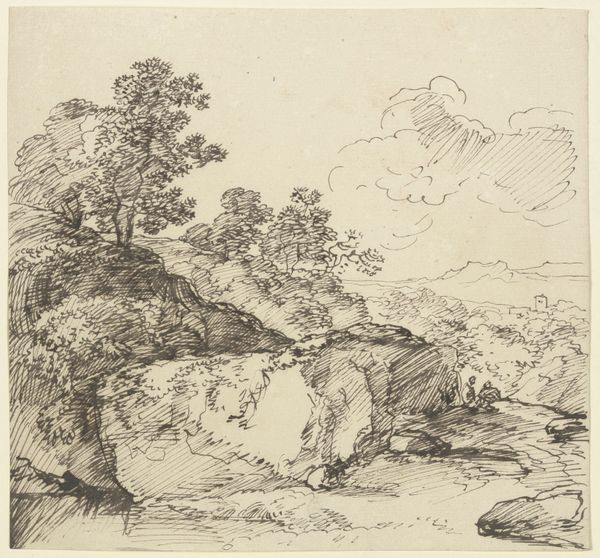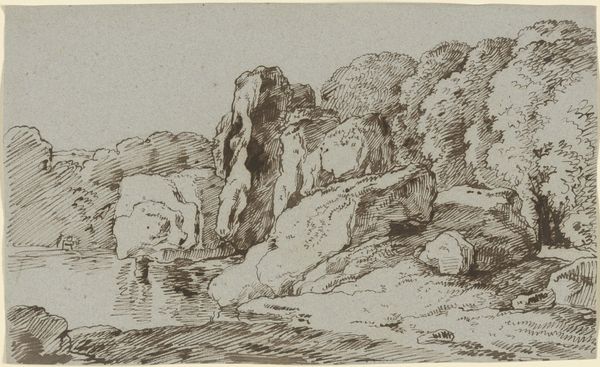
drawing, ink
#
drawing
#
landscape
#
form
#
personal sketchbook
#
ink
#
romanticism
#
15_18th-century
#
line
#
pen work
#
realism
Copyright: Public Domain
Editor: This is "Felsturm an einem Gewässer, im Vordergrund weidendes Vieh" by Franz Kobell, a landscape drawing using ink. The stark contrast between the craggy rocks and grazing cattle creates an interesting tension. How do you interpret this work, especially considering the historical context it might have emerged from? Curator: It's interesting that you picked up on that tension. Think about the period – this feels rooted in Romanticism, yet there’s a quiet realism too. Landscapes at this time weren't just pretty scenes; they reflected societal ideals, ownership, and even anxieties about nature versus civilization. Kobell positions the viewer within a constructed, controlled nature; the grazing cattle are not just picturesque, but signs of dominion, contrasting the untouched rock formations. Editor: So, the "untouched" parts are actually significant? Are you saying even the *lack* of people has meaning? Curator: Precisely! The seemingly empty space becomes a stage for contemplating the absence of labour, maybe the absence of the dispossessed from idyllic representation. Whose stories aren't we seeing in this landscape? Consider how power dynamics – land ownership, class, even gender – get inscribed in seemingly ‘natural’ spaces. What do *you* feel is most interesting? Editor: The romantic elements clash with the kind of brutal, almost scientific detail in the rock textures...almost like an early geological survey. It is more unsettling than romantic, I would say. Curator: A geological survey done for whom, by whom? Think about who gets to name things, and why. What do those imposing rocks evoke in that sense? What stories of extraction, labor, or ownership might those formations contain if we were to think of them politically and materially? Editor: That reframing makes me realize the power dynamics are there, just subtly embedded in the "naturalness." I see it so differently now. Curator: And that’s the point – art isn't just about aesthetics. It’s about engaging critically with the world it represents and the world it comes from. Editor: Thanks! I learned a lot by reconsidering how seemingly ‘natural’ scenes might uphold the systems that we usually ignore.
Comments
No comments
Be the first to comment and join the conversation on the ultimate creative platform.
